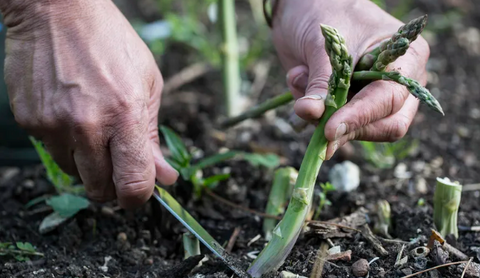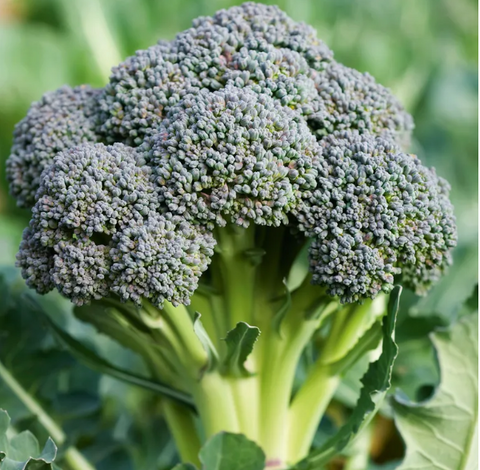Introduction
Sunflowers, with their vibrant blooms and versatile uses, have captured the hearts of gardeners and nature enthusiasts alike. From towering giants to delicate dwarfs, the diverse array of sunflower varieties offers endless possibilities for enhancing gardens and landscapes. In this comprehensive guide, we delve into the rich history, importance, and cultivation of sunflowers, exploring both popular and lesser-known species to inspire every gardener's imagination.The following content also has some reference value for raised garden beds.

History of Sunflowers
Origins in the Americas
The journey of sunflowers begins in the ancient civilizations of the Americas, where indigenous peoples cultivated them for their nutritious seeds and oil. Native to North America, sunflowers held symbolic significance, revered for their association with solar deities and their role in cultural ceremonies.
Spread across the globe
Following European exploration, sunflowers made their way to new continents, captivating botanists and gardeners with their beauty and utility. Their cultivation spread rapidly across Europe and beyond, establishing them as a globally cherished plant.
Evolution of sunflower varieties
Over centuries of cultivation, sunflowers underwent significant evolution, leading to the development of diverse varieties with distinct characteristics. Through selective breeding and natural adaptation, modern sunflower cultivars emerged, catering to various gardening preferences and environmental conditions.
Importance of Sunflowers in Gardening
Ornamental value
Beyond their practical uses, sunflowers adorn gardens with their striking beauty, adding splashes of vibrant color and texture to landscapes. Whether planted en masse or as focal points, their cheerful blooms brighten any garden setting.
Food source for birds and pollinators
Sunflowers play a vital role in supporting wildlife and providing nourishment for birds and pollinators throughout the seasons. Their abundant seeds attract a myriad of avian species, while their nectar-rich flowers serve as essential fueling stations for bees, butterflies, and other beneficial insects.
Soil improvement properties
In addition to their aesthetic and ecological benefits, sunflowers contribute to soil health through phytoremediation and nutrient cycling. Their deep-reaching roots help break up compacted soil, while their biomass enriches the earth with organic matter, enhancing overall soil fertility and structure.
Popular Sunflower Species
Helianthus annuus (Common Sunflower)
The quintessential sunflower, Helianthus annuus, reigns supreme with its iconic golden petals and towering stature. This classic species thrives in a variety of climates and soil types, making it a favorite among gardeners worldwide.
Helianthus debilis (Beach Sunflower)
Native to coastal regions, Helianthus debilis, or Beach Sunflower, boasts resilience in sandy soils and salt-laden air. With its dainty blooms and trailing habit, it lends a beachy charm to gardens and seaside landscapes.
Helianthus maximiliani (Maximilian Sunflower)
Tall and elegant, Helianthus maximiliani, or Maximilian Sunflower, offers a late-season burst of sunshine with its abundant yellow flowers. Its robust nature and drought tolerance make it a standout choice for prairie-style plantings and wildlife habitats.

Lesser-Known Sunflower Varieties
Helianthus petiolaris (Prairie Sunflower)
Embracing the spirit of the American prairie, Helianthus petiolaris, or Prairie Sunflower, captivates with its slender stems and cheerful blooms. Perfect for naturalistic landscapes, it thrives in dry, sunny conditions, attracting native pollinators and wildlife.
Helianthus tuberosus (Jerusalem Artichoke)
Often overlooked for its culinary potential, Helianthus tuberosus, or Jerusalem Artichoke, surprises with its sunflower-like blooms and tuberous roots. Beyond its edible tubers, it serves as a valuable source of forage for livestock and wildlife.
Helianthus argophyllus (Silverleaf Sunflower)
Uniquely adorned with silvery foliage, Helianthus argophyllus, or Silverleaf Sunflower, adds a touch of elegance to garden borders and wildflower meadows. Its drought tolerance and heat resistance make it a resilient choice for hot, dry climates.
Sunflower Varieties for Ornamental Gardens
Dwarf Sunflowers
Ideal for small spaces and container gardens, dwarf sunflowers bring a big impact in a compact package. With their manageable height and prolific blooms, they offer an enchanting display of color without overwhelming garden beds.
Multi-Branching Sunflowers
For a continuous parade of blooms, multi-branching sunflowers steal the spotlight with their prolific branching habit. These dynamic plants produce an abundance of flowers on each stem, creating a mesmerizing floral spectacle throughout the growing season.
Teddy Bear Sunflowers
True to their name, Teddy Bear Sunflowers charm gardeners with their fluffy, golden blooms and compact growth habit. These adorable cultivars evoke nostalgia and whimsy, making them a delightful addition to children's gardens and cut flower arrangements.
Sunflower Varieties for Edible Gardens
High-Oil Content Varieties
Selected for their abundant oil-rich seeds, high-oil content sunflower varieties offer a dual-purpose delight for gardeners and culinary enthusiasts. Whether pressed for oil or enjoyed as nutritious snacks, these sunflowers provide a bountiful harvest with exceptional flavor and nutritional value.
Giant Sunflowers for Seeds
For seed aficionados and backyard growers alike, giant sunflowers steal the show with their colossal flowerheads and copious seeds. These towering beauties not only command attention in the garden but also yield a generous supply of plump, meaty seeds ideal for roasting, snacking, or bird feeding.
Edible Petal Varieties
Beyond their seeds, certain sunflower varieties offer edible petals that add a touch of gourmet flair to culinary creations. With their mild, slightly sweet flavor and vibrant colors, sunflower petals elevate salads, desserts, and beverages, infusing dishes with a hint of floral sophistication.
Unique Characteristics of Sunflower Varieties
Color Variations
From sunny yellows and fiery oranges to rich reds and creamy whites, sunflowers exhibit a kaleidoscope of color variations, each adding its own allure to garden landscapes. Whether monochromatic or multicolored, these diverse hues showcase the endless possibilities for creative expression in the garden.
Flowerhead Sizes and Shapes
Sunflower flowerheads come in an array of sizes and shapes, ranging from petite and dainty to large and robust. Whether adorned with single or multiple layers of petals, each flowerhead exudes its own charm, offering endless inspiration for floral arrangements and garden design.
Leaf Texture and Color
Beyond their blooms, sunflowers showcase an array of leaf textures and colors, ranging from velvety greens to silvered hues. These foliage variations add depth and dimension to garden landscapes, creating visual interest and contrasting accents against vibrant flowerheads.
Growing Conditions and Tips for Planting Sunflowers
Seed Selection
When selecting sunflower seeds, consider factors such as bloom time, mature height, and disease resistance to ensure a successful and harmonious garden display. Opt for reputable seed sources and explore heirloom varieties for added diversity and historical intrigue.
Sunlight Requirements
Sunflowers thrive in full sun, requiring a minimum of six to eight hours of direct sunlight daily for optimal growth and flowering. Choose a well-drained location with ample sunlight exposure to promote healthy development and prolific blooms.
Soil Preferences and Preparation
Prepare garden beds by amending soil with organic matter and ensuring good drainage to support robust root growth and nutrient uptake. Sunflowers prefer moderately fertile, loamy soils with a pH range of 6.0 to 7.5, though they exhibit remarkable adaptability to a wide range of soil types.
Sowing Techniques
Sow sunflower seeds directly into the garden after the danger of frost has passed, spacing them according to the mature size of the chosen variety. Plant seeds at a depth of 1 to 2 inches and water thoroughly to ensure adequate moisture for germination and establishment.
Watering Needs
While sunflowers are relatively drought-tolerant once established, consistent moisture is essential during the early stages of growth and flowering. Water plants deeply and evenly, allowing the soil to dry slightly between watering to prevent waterlogged conditions and root rot.
Harvesting Sunflowers
Recognizing Maturity
Determine the optimal time for harvesting sunflowers by observing the appearance of the flowerheads and seeds. Mature sunflower heads will droop slightly, and the back of the flower will turn brown, indicating that the seeds are ready for harvest.
Harvesting Seeds
To harvest sunflower seeds, cut the flowerheads from the stem using sharp pruners or scissors, leaving several inches of stem attached for handling. Place harvested flowerheads in a dry, well-ventilated area to allow seeds to mature fully before extraction.
Drying Flowerheads
Once harvested, hang sunflower flowerheads upside down in a warm, airy location to facilitate drying and seed maturation. Remove seeds from dried flowerheads by rubbing them gently or using a fork to dislodge seeds from the seed head.
Landscaping with Sunflowers
Border Plantings
Sunflowers make a bold statement when planted along garden borders, providing a vibrant backdrop for other flowering perennials and annuals. Their towering presence adds vertical interest and creates a sense of enclosure, defining garden spaces with natural beauty and charm.
Mass Plantings
For dramatic impact and visual cohesion, consider mass plantings of sunflowers in garden beds or open spaces. Planting sunflowers in large groups creates a sea of golden blooms that command attention and attract pollinators, transforming ordinary landscapes into breathtaking vistas.

Companion Planting
Harness the power of companion planting by pairing sunflowers with complementary flowers, herbs, and vegetables to enhance garden health and productivity. Sunflowers attract beneficial insects such as ladybugs and lacewings while deterring pests, making them valuable allies in organic gardening practices.
Conclusion
In conclusion, exploring the diverse world of sunflower varieties offers endless opportunities for gardeners to unleash their creativity and cultivate thriving, biodiverse landscapes. From ornamental displays to edible delights, sunflowers captivate with their beauty, resilience, and ecological significance, enriching gardens and nourishing ecosystems with their sunny disposition. Whether you're a seasoned gardener or a novice enthusiast, embarking on a sunflower journey promises a rewarding experience filled with joy, inspiration, and the simple pleasures of nature's bounty.









